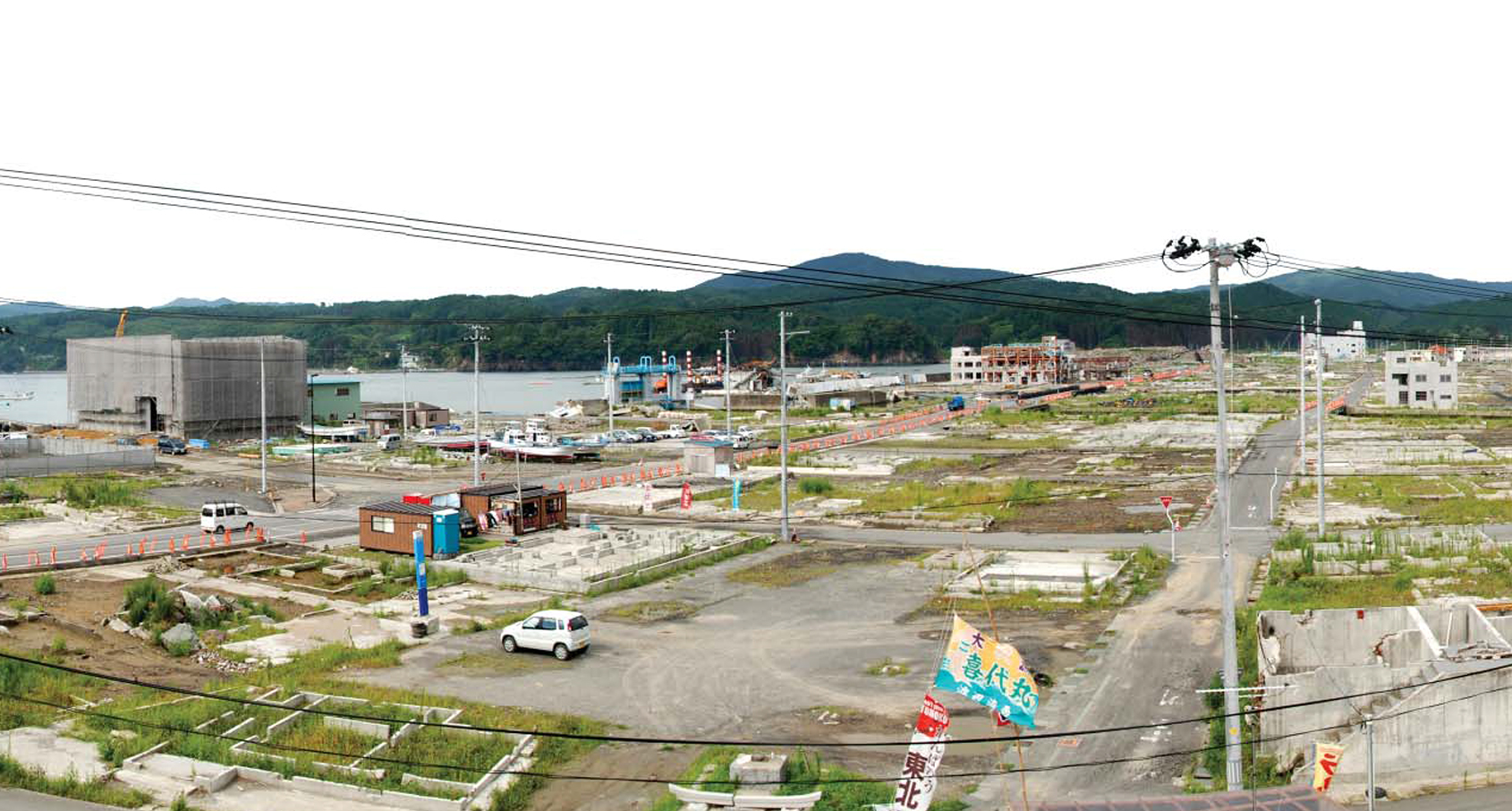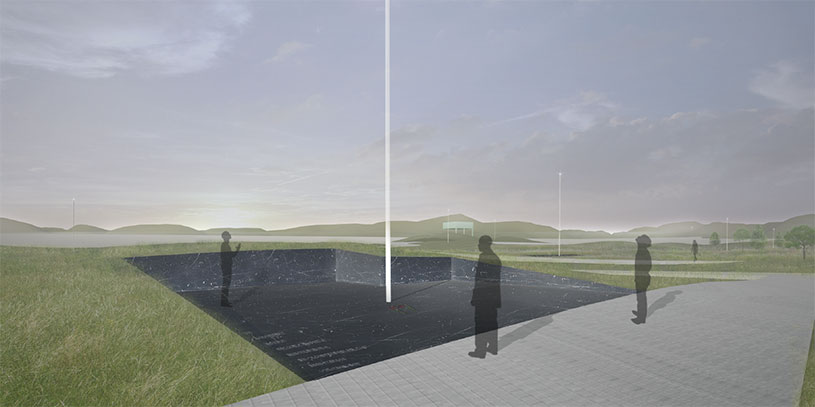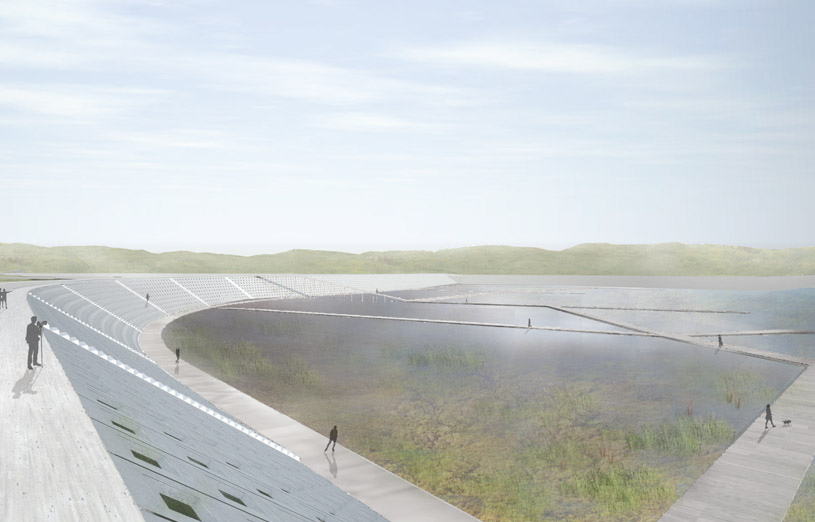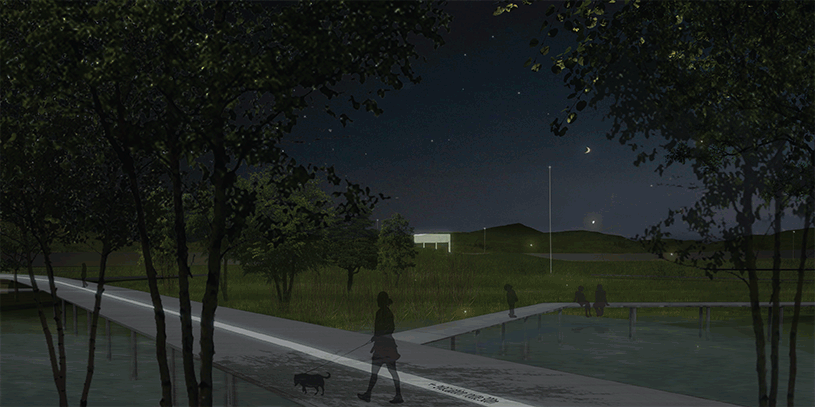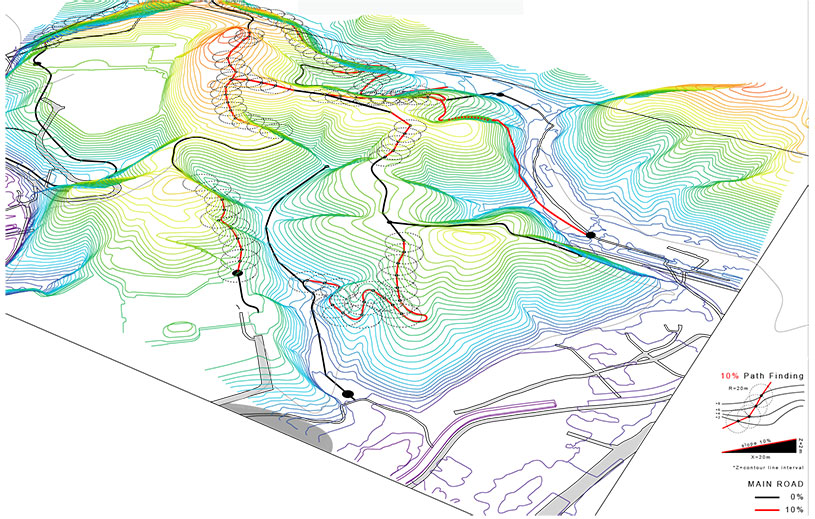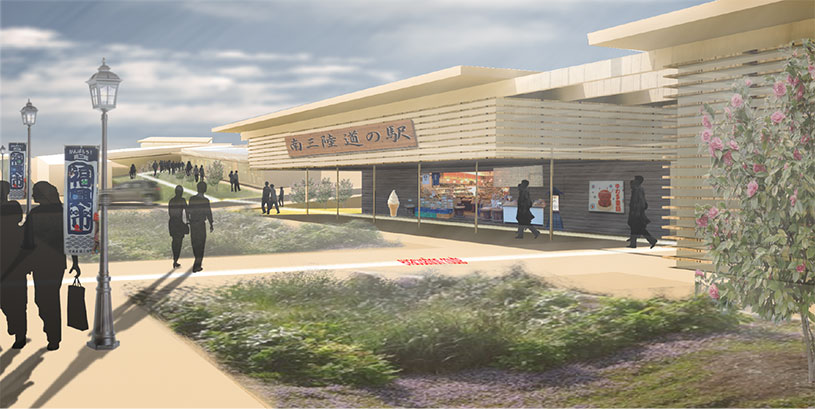Sanriku Project: Shizugawa Design Proposal
Five land-use design proposals that elaborate on the master plan for Shizugawa, produced through discussions with the planning consultants and members of the community.
The 2011 Great East Japan Earthquake was both one of the most powerful ever recorded as well as the most costly, completely destroying coastal cities and crippling infrastructure. Although the tsunami would have had an even more devastating impact if it wasn’t for Japan’s highly regarded emergency preparedness plans, the Tohoku earthquake and subsequent tsunami still utterly overwhelmed the nation’s formal capacities. While a natural event of such magnitude occurs rarely, it nonetheless serves to highlight the limitations of our current infrastructure and technology to safeguard those in harm’s way and reveals the inherent vulnerability in our current patterns of development. Planning both safeguards and inherent resilience requires sustained debate and reconsideration of fundamental approaches in order to be improved -- bigger and stronger cannot be our only solution. Therefore, in addition to our immediate contributions, our involvement aims to have a positive influence to long-term ongoing reassessment of developmental strategies and practices for the region.
Minami Sanriku is a coastal city located in Miyagi prefecture, nestled within a hilly topography dotted with naturally forming bays. During the tsunami this terrain amplified its impact by constricting its path and funneling the wave thousands of meters into the valley. These smaller valleys are typically each home to one of the many semi-independent fishing hamlets, whose residents have historically organized under their own Keiyakukai, or community contract, making it challenging to participate in existing governmental structures for planning. To compound the stress in these divisions, the city of Minami Sanriku is itself an agglomeration of four former cities, Shizugawa, Utatsu, Togura, and Iriya, forced together by the recent Heisei Merger in 2005 despite each having their own unique historical identity, culture, and bureaucratic organization. This physical and social fragmentation is often the cause for tension between community groups and individuals, a problem that has been magnified by the disaster.
Report
Sanriku Project 2012 Booklet - 12.4mb
Partners
Yoshihiro Hiraoka - Professor Miyagi University
Miyagi University
Contributors
Miho Mazereeuw, Ted Gilman, Yoshihiro Hiraoka, Chen Chen, Kenya Endo, Takuya Iwamura, Josh Margul, Tristie Tajima, Nicola Saladino, Sophia Xuejie Jiang, Ted Bestor, Andrew Littlejohn, Jade Luo, Andrea Murray, Grace Song, Sky Milner, Jean You, Ayumi Kanamoto, Ryoji Watanabe, Hiroko Kumaki, Yusuke Tsugawa, Hikari Senju
Summer 2012

